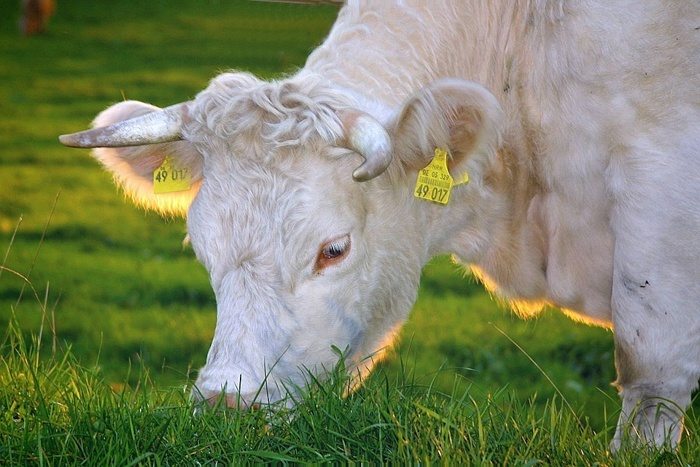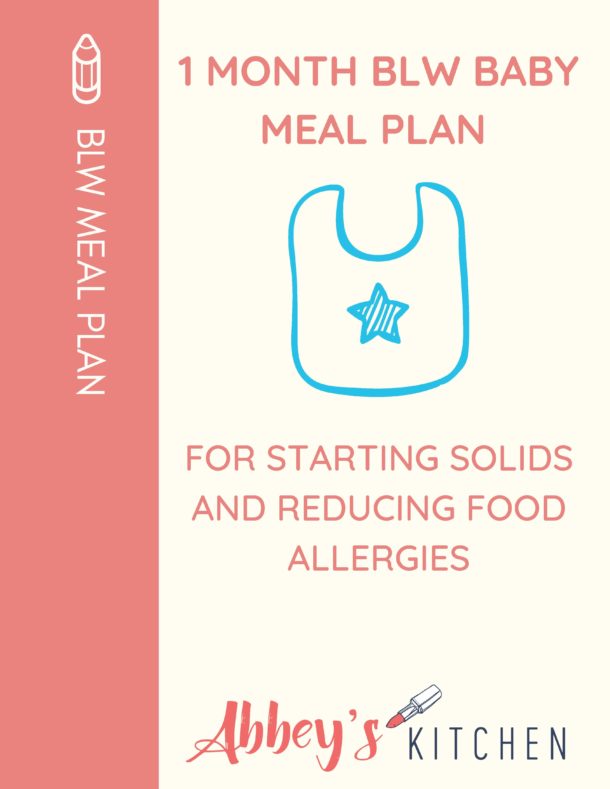If you’ve left your house in the last year, you’ve probably had a friend, colleague or that chatty person beside you at the coffee shop talk about the paleo diet trend. But let me catch you up on what it’s all about if you’re feeling a bit out of the loop. The basis of the paleo diet means you’re eating like our caveman ancestors did. This equates to eating mainly meat, fish, vegetables and a bit of fruit while excluding “modern” foods such as dairy or grain products and processed foods. Paleo diet enthusiasts have many variations of this diet that may include cutting out caffeine, consuming only grass-fed products or dairy if it’s unpasteurized. With promoters claiming better digestion and absorption, long-term weight loss, reduced bloating, and anti-inflammatory benefits- it sounds pretty promising! Is this the right new years resolution for you? I’m going to take us into the nitty-gritty of what the evidence has to say about this diet trend.

Back to the Palaeolithic era
Let’s start with the initial concept of the paleo diet plan- eating like our Palaeolithic caveman ancestors between 2.5 and 10 million years ago. This was the time humans were living in hunter-gatherer communities. This means they were foraging for seasonal berries and nuts while chasing mammals to exhaustion, spearing them (if they were lucky!) and carrying them back for miles to their group. And the cooking methods they used? Charring meat over an open fire while eating the majority of all other foods raw. You’re probably starting to see some marked differences in how modern society is living. With the convenience of vehicles, grocery stores readily available and kitchen appliances galore we are definitely living a completely different lifestyle.
What does eating on a Paleo Diet look like?
Breakfast: Bacon and eggs, with a piece of fruit
Lunch: Burger (no bun) fried in butter wrapped in lettuce with some salsa
Dinner: Fried pork in butter with vegetables
Breakdown of the Macronutrients in the Paleo Diet
The paleo diet is recommending almost half and half protein and fat with very little carbohydrate. Although our bodies can survive without carbohydrates, we go into a state of ketosis when we’re using fat as our main energy source. And what does ketosis mean? Well, if you’ve ever met someone on a low carb diet you’ll often find they’re very irritable- that’s because our bodies weren’t meant to function without carbs. Evidence of this, in simple dietitian terms, is that our bodies are limited in the amount of protein we can consume at each meal. It varies largely depending on the person depending on activity level, but we know an average of 15-30% of our calories should be from protein and that ideally you should aim for around 25-30 grams per meal. Much more than this (without compensating with a super strenuous exercise regime), and you may cause unnecessary excess stress on your kidneys. Not to mention the paleo diet is recommending animal sources of protein only such as beef, pork and chicken, which can be high in saturated fats and cholesterol.
That brings us into the issue of high amounts of fat, which largely come from meat sources if you’re following a strict paleo diet. More lenient followers may also rely on oils, avocado and nuts although lean protein sources such as legumes and soy products are prohibited. A high fat diet has some serious concerns, just as a high protein does. These include increased risk of heart disease (though new research on this is divided), possible weight gain and constipation. There is new evidence coming out to suggest a ketogenic (or very low carb) diet may help with long term weight loss in obese patients, although further research is needed on how these diets will affect renal function long term. As mentioned above, the diet is low in carbohydrates which creates additional concerns due to lack of fibre and constipation, essential B vitamins, high cholesterol, kidney problems and increased osteoporosis risk. You can see a lot of these risks overlap with those listed above.
CLAIMS
Better Digestion and Absorption on Paleo Diet
First off with digestion, see above for what happens with decreased fibre intake (hint: not-so-sexy constipation!). Then we get into the reason this claim was made: it’ based on the concept of consuming mainly meat, veggies and a bit of fruit and nuts to eat like our ancestors in the Paleolithic era. This is built on the assumption that these are the foods our ancestors were eating.
A growing body of research from a recent article suggests that our ancestors may have been more of vegetarians than previously thought. It’s believed that our descendants mainly foraged on berries, seeds and vegetables while the occasional meat was only consumed when an animal could be caught or the scraps from a recent kill would deem them lucky. This new evidence is directly contradicting to the meaty focus of the paleo diet.
Still not convinced? I found another great article that discusses some preliminary thoughts about the gut comparison of primates (our oldest ancestor) to that of humans. Primates and humans are believed to have a remarkably similar gut, and what do primates primarily eat? They ate fruits, nuts, seeds and insects, with the occasional snack of meat. An anthropologist wrote an article with similar findings of our ancestors gut comparison to primates. Now I’m not saying we should all be eating like chimps, but this gives us insight into what our guts we’re initially designed to eat. Despite being extremely evolutionarily advanced in the sense of our brains, immune systems and dexterity, our digestive systems are pretty average. The large-scale gut has stayed the same, but we have made evolutionary changes in regards to enzymes and the ability to digest certain foods. An example of this is being able to digest milk as adults. Through evolution we developed a genetic mutation so that our bodies can digest dairy through the enzyme lactase. Likewise, the bacteria colonies in our gut have also changed to adapt to the type of foods our modern society is consuming.
Long-Term Weight Loss on Paleo Diet
First of all, this diet is fairly strict cutting out two major food groups: dairy and grains. Dairy products been shown in several studies to help with weight loss and maintenance (here & here). Not to mention the calcium, potassium, magnesium and vitamins D, A, B12 which are rich in dairy. These vitamins and minerals work together to help build strong bones, reduce blood pressure and decrease cardiovascular disease. Still not convinced? Cultured dairy products contain probiotics, which will create a healthy, happy gut flora!
Grains are strictly cut out of all variations of the paleo diet and have gotten quite the bad rep in the last few years. On the contrary, whole grains have been shown, among many other benefits, to be associated with a lower BMI and central adiposity (here, here & here). One great article, a large comprehensive review of the scientific evidence, found that a diet high in whole grains and legumes (both prohibited on the paleo diet) was associated with significant weight loss. I did find one meta-analysis that showed short-term improvements in metabolic syndrome components by following the paleo diet over traditional dietary interventions, although my concern here is with the long-term compliance.
Basically, this reassures the age-old recommendation: stick to any diet you can follow for life!
Reduced Bloating on Paleo Diet
The claim behind reduced bloating on a paleo diet is that the diet is high in fibre and limits sodium. Now, increased fibre and decreased sodium will help reduce bloating, but is true of the paleo diet? Fibre is mainly found in our diet from whole grains, fruits and vegetables. Now we know whole grains are cut out of the picture, fruit is limited and vegetables are in abundance. So this diet won’t be low in fibre, but I would say it would be hard to sustain a high fibre diet consuming mainly meat and veggies.
And with reduced sodium? A major source of sodium in our diets is processed foods, which are cut out of the paleo diet- awesome! But you can’t forget sodium can also come from sauces, how the food is prepared and salt that may be added at the table. Added salt isn’t a restriction in the paleo diet, so if people were adding to their foods before going paleo, they probably still are. Overall, it seems reduced bloating may be a far-fetched claim unless the paleo enthusiast was actively trying to increase fibre and reduce sodium.
Anti-Inflammatory Benefits on Paleo Diet
Promoters of the paleo diet claim that inflammation, a leading factor of heart disease, is reduced on the paleo diet. Let’s delve deeper into this statement.
First is the reduced inflammation claim. Now, we need to remember that inflammation is caused by a huge number of factors, but we’re going to focus on the dietary component. The evidence around the effectiveness of an anti-inflammatory diet is lacking although the principles of what it includes are healthy choices. These foods contain fish, fruit, vegetables, whole grains and healthy fats while avoiding red meat. I would agree, those are healthy food choices, but they’re not consistent with the paleo diet, which limits fruit, avoids whole grains and promotes meat. Omega-3 is a key player in the fight against inflammation and one of the best sources of omega-3, is fish. So if you’re increasing your intake of fish on the paleo diet, yay! Keep going!
The second aspect of this claim, that cardiovascular disease will be reduced, is a whole other topic. A “heart healthy diet” has been researched extensively and we know a diet low in cholesterol, saturated fat, and refined sugars will reduce the risk of heart disease. I believe their evidence to support this claim was the higher omega-3 intake, but what about the increased saturated fat and cholesterol intake we talked about above? Then we hear the claim, well, our ancestors didn’t have modern diseases like heart disease, diabetes and obesity. A recent study in The Lancet found that, opposing to this idea, 47 of the 137 ancient mummies they studied from around the world had definite or probable atherosclerosis. This indicates it’s not solely our modern lifestyle promoting chronic disease. And even if these diseases weren’t as common among the Palaeolithic people, they faced diseases our industrialized world doesn’t have to worry about such as poor sanitation and a lack of modern medicine that led to their short life spans.
Take Home Messages on Paleo Diet
- Our guts and lifestyles aren’t the same as our Palaeolithic ancestors, so there is little logic in trying to eat like them
- There are some definite benefits to eating the “paleo way” including cutting down on all the processed crap we consume which is packed with sodium and has less protein, fibre and nutrients.
- Very high intakes of red meat and some saturated fats may be linked to cardiovascular disease while whole grains and legumes have been show to decrease this risk
- Dairy and whole grains, which are both cut from the paleo diet, have been shown to help maintain long-term weight loss
- You will have reduced bloating only if you’re following a high fibre, low sodium paleo diet
- There may be benefits to the Palaeolithic diet in decreasing markers of the metabolic syndrome, but more research is necessary
- The best diet is one you can follow for life and will include all foods in moderation
What do you think of the paleo diet? Do you plan to try it as part of your new years resolution? Have you had success with it in the past? Leave us a comment below!
Contribution by AK Dietetic Intern Tiffany Schebesch
Updated on October 23rd, 2020

Abbey Sharp is a Registered Dietitian (RD), regulated by the Ontario College of Dietitians. She is a mom, YouTuber, Blogger, award winning cookbook author, media coach specializing in food and nutrition influencers, and a frequent contributor to national publications like Healthline and on national broadcast TV shows.











Elise says
What are your thoughts on just cutting out grains (short term) for GI complaints?
Abbey Sharp says
You could try it out and then slowly reintroduce. I would also recommend eating low FODMAP foods, and then slowly introduce higher FODMAPs and keep track of any symptoms to have a better idea of what foods trigger your digestive stress.
PaulJohnson says
Paleo diet has been only around for a few years. the vegan lifestyle has been around for decades.
the paleo diet is still considered to be a “fad diet”. Check back in ten years.
The paleo diet is stupid. see sources.
the paleo diet allows (encourages) meat consumption. A vegan avoids all animal products.
the paleo diet discourages dairy consumption. So does a vegan
The paleo diet discourages the consumption of grains. (see, i told you it was stupid)
also a vegan is not just following a meat free diet. He is an individual committed to reducing the level of animal cruelty in the world. by not eating any animal products or wearing any animal product and even avoiding products that were tested on animals. Vegans consider it a lifestyle not a diet.
Abbey Sharp says
Thanks for sharing!
Abbey Sharp says
Thanks for sharing 🙂
Allyson says
I thought this was a really refreshing blog post. I am always HESITANT to follow any sort of strict diet, and I agree very much that our bodies are different than they were in the paleo age. I think a well balanced diet is key and cutting out the processed food is should be very limited. Thanks for the balanced report!
Abbey Sharp says
My pleasure Allyson – glad it was helpful.
Mikki says
Abbey. Another great post. You have done a great job, I think, covering the plus and minuses of the Paleo diet.
I’m not a big fan of this diet, but totally agree with you that Whole foods in moderation is the best.
Abbey Sharp says
Exactly! That’s what matters.
Cassandra says
Having conquered my own binge eating disorder issues through therapy, i don’t subscribe to any of these “diets”. i think we should throw that word out of the dictionary. eat whole foods like your grandparents did & cook most of your own meals – that’s my philosophy
Abbey Sharp says
Yes, i hate the word diet. and i hate that my profession has the word in it
jill conyers says
i’ve never tried the paleo diet so i don’t have much of an opinion other than to say whole foods plant based is what works best for my body.
Always great info Abbey!
Abbey Sharp says
yes do what works for you!
CArmy says
While I would love to eat allllll the bacon, I don’t agree with cutting out certain foods.
Abbey Sharp says
haha yes!
Chrissy @ Snacking in Sneakers says
Nice article! Thanks for linking to relevant research. Totally agree with your point at the end that the best diet is what you can stick with! 🙂
Abbey Sharp says
exactly- thats what matters
Ellie | Hungry by Nature says
Wow you have a ton of great info in this article! I actually am spending the month of January completing the Whole30 in an attempt to figure out if something specific in my diet is causing my autoimmune issues to flare up. But I am looking forward to reintroducing dairy and grains back into my routine for a balanced diet in February.
Abbey Sharp says
Got it. Yes, listen to your body!
Lisa says
Really greaT summary of the evidence. I love seeing fellow dietitians stick to the facts and share them with their audienCe. Well done!
Abbey Sharp says
thanks Lisa!
KJ says
P.S. Your conclusion that the best diet for life is one that includes all whole foods in moderation – I agree 100%.
Abbey Sharp says
thank you!
KJ says
“High intakes of meat and fats (especially saturated fat and cholesterol) has been linked to cardiovascular disease.” THE FAT/HEART DISEASE CLAIM, STARTED IN THE 50’S, HAS BEEN LARGELY DEBUNKED IN THE PAST FEW YEARS. IT’S TAKEN THEM A WHILE BUT THE FDA HAS ALSO FINALLY ADMITTED THAT THE LINK BETWEEN DIETARY CHOLESTEROL AND HEART DISEASE IS WEAK AT BEST. INTERESTING NEWS REPORT A COUPLE OF WEEKS AGO HAD HARVARD ADMITTING THAT THEIR RESEARCH TEAM IN THE 60’S WAS PAID OFF BY THE SUGAR INDUSTRY TO MINIMIZE THE LINK BETWEEN SUGAR AND HEART DISEASE AND INSTEAD PUSH THE BLAME IN THE DIRECTION OF FAT. THOSE STUDIES WERE KEY IN INFLUENCING THE START OF THE WHOLE LOW-FAT MOVEMENT WHILE ENCOURAGING SUGAR CONSUMPTION THROUGHOUT THE U.S.. WE ALL KNOW WHERE THAT HAS LEAD US. AS WITH ANYTHING, IT WILL TAKE A COUPLE OF GENERATIONS TO UNDO ALL THE FALSE INFORMATION HEALTH PROFESSIONALS AND THE GENERAL POPULATION HAVE BEEN TAUGHT SINCE THE 50’S. (ON A SIDE NOTE, RESEARCH THAT TRANS-FATS ARE LINKED TO HEART DISEASE REMAINS CONSISTENT.)
Abbey Sharp says
thanks Kimmy. You’re right. We don’t yet know where the research lies on fat. I believe that an excess of refined carbs is certainly more of the problem, but still, too much red meat and some saturated fats do still appear to possibly be linked to CVD. Again, we’re talking in excess, which is why I believe a bit of everything is your best bet.
Shawn Eagle says
Awesome as always Abbey! I did some research as well and found Paleo to be useless. I don’t agree with any “diet” that cuts out any food group or food in general (unless for medical reasons). limiting foods like this can lead to Disordered thinking and then to disordered eating. I find the best long term healthy eating styles the Mediterranean diet and d.a.s.h. diet. nothing is cut they just make better choices.
Abbey Sharp says
yes, that is the main problem with all of these extreme diets
Fabien says
“Let’s start with the initial concept of the paleo diet plan- eating like our Palaeolithic caveman predecessors between 2.5 and 10 million years ago.”
A mistake, here : it’s between 2.5 millions and 10 000 years. More relevant would even be between 200 000 and 10 000 years : since the apparition of our species, Homo Sapiens. Others species are not quite relevant.